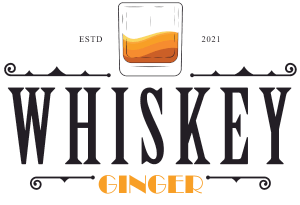The question is: Are their attempts to engage working?
In the realm of spirits and libations, the winds of change are unmistakable. As the first wave of Generation Z approaches 27 in 2024, beverage companies sit at the precipice of a unique challenge: understanding and tapping into the preferences and purchasing power of a generation starkly different from its predecessors.
By year-end, one-third of this demographic will have crossed the legal drinking age, a significant portion that mandates keen observation of their alcoholic proclivities. The stakes are undeniably high; Gen Z’s purchasing prowess is estimated at a staggering $140 billion, with a notable 40% slice of this pie belonging to those born between 1996 and 2010.
The Conundrum of Marketing to Gen Z

With the shadow of Millennials gradually waning, brands grapple with the intricate task of wooing Gen Z with their offerings, be it bourbon or a neatly packaged cocktail. But what makes Gen Z tick?
It’s an ongoing learning process for the liquor industry, as elucidated by Jack Daniel’s global brand director, Casey Nelson. The limited age range data (restricted to 25 and above) curtails a comprehensive trend analysis. Yet, initial gleanings underscore one crucial point: traditional tactics that worked wonders for previous generations won’t cut it for Gen Z. Here’s a closer look at the traditional strategies that aren’t working for Gen Z:
- Celebrity Endorsements: While having a big-name celebrity tout a spirit brand was once a surefire way to draw attention, Gen Z often seeks more authentic, grassroots influencers. They connect more with real people sharing real experiences rather than a scripted celebrity endorsement.
- One-Size-Fits-All Messaging: In the past, blanket campaigns targeting wide demographics were the norm. Today, Gen Z appreciates more personalized, niche content. They value individuality and prefer brands that recognize and cater to their unique identities.
- Push Marketing: Bombarding audiences with promotional content, whether it’s through television commercials or print ads, won’t sway Gen Z. They are more about pull marketing—being drawn to brands organically, often through social media channels, where they can engage, ask questions, and co-create content.
- Heavy Reliance on Legacy: While the rich history of a brand does hold some appeal, Gen Z is more interested in what the brand is doing now and in the future. Their focus is on innovation, sustainability, and inclusivity, rather than just a storied past.
- Static Digital Presence: Simply having a website or a social media profile isn’t enough. Gen Z expects brands to interact, engage, and evolve. They appreciate real-time responses, interactive content, and dynamic digital experiences.
- Overproduced Content: The overly polished, high-production advertisements might not always hit the mark with Gen Z. They appreciate raw, candid, and unfiltered content, often feeling it’s more genuine.
- Lack of Purpose-Driven Messaging: While earlier generations might have been content with brands that produce quality products, Gen Z expects brands to stand for something more. Social responsibility, ethical sourcing, and a clear brand purpose resonate more than just product quality.
Neal Cohen, from Tip Top Proper Cocktails, draws a clear line of demarcation between his coming-of-age era, dominated by bourbon and craft beer, and the current scene, awash with ready-to-drink (RTD) options.
Gen Z’s Priority is Authenticity With Brands
If there’s one thing the beverage industry needs to internalize, it’s Gen Z’s penchant for authenticity. Fabricated brand narratives won’t pass muster. Instead, genuine tales rooted in reality, and preferably intertwined with causes such as diversity, sustainability, or inclusivity, stand a chance. The Gen Z cohort, adept with technology, can easily fact-check claims, leaving no room for inflated brand stories. As Rob Cordes of Garrison Brothers Distillery aptly puts it, Gen Z’s commitment to ‘filter through B.S.’ makes them a discerning audience.
Brands’ Evolving Strategies
Brands have been quick to tweak their strategies in response. Jack Daniel’s, for instance, veered away from its quintessential Lynchburg-centric narrative to launch “Make It Count” in 2017, spotlighting the unique experiences of its patrons across the globe. This campaign was a global magnifier, focusing on the unique experiences of Jack Daniel’s patrons. But what does “Making It Count” mean?
The campaign celebrated those life moments where individuals, irrespective of their geographic, cultural, or social backgrounds, made conscious choices that added value to their experiences. It wasn’t about the grandeur or the monumental decisions but rather those everyday moments: choosing quality over quantity, savoring a heartfelt conversation over a hurried chat, or simply relishing the golden hue of a perfectly poured whiskey at day’s end.
By spotlighting the diverse experiences of its global patrons, Jack Daniels showcased a universally relatable ethos. It reminded consumers that in a world saturated with choices, some decisions stand out, much like opting for a glass of their signature whiskey. It’s about pausing, appreciating, and making every moment count.
The beauty of the “Make It Count” campaign was its sheer inclusivity. It wove stories from different corners of the world, seamlessly connecting them under the umbrella of shared values and moments. While the brand’s association with legendary figures like Frank Sinatra and Lemmy Kilmister gave it iconic status in the past, this campaign emphasized that every individual, with their unique story, is iconic in their own right.
Nelson cites Jack Daniel’s evolution by referencing its multifaceted association with music. From Frank Sinatra’s endorsement in the mid-20th century to its contemporary ties with both hip-hop and country genres, the brand’s dynamism is evident.
Gen Z’s Alcoholic Preferences

Amidst the murmurings about Gen Z’s comparatively restrained drinking habits, it’s essential to separate the wheat from the chaff. While it’s true that this generation might not guzzle alcohol with the same fervor as its predecessors, writing them off as potential teetotalers is an oversimplification. Their drinking philosophy leans more towards ‘quality over quantity’. Factors like health awareness and safeguarding their digital image (avoiding embarrassing ‘drunk posts’, for instance) influence their drinking choices.
This nuanced approach dovetails neatly with the industry’s shift towards premium spirits. Additionally, the tangible presence of brands at venues becomes paramount. Engaging bartenders to spark conversations around a prominently displayed bottle might be an age-old tactic, but it retains its efficacy. Gen Z’s culinary curiosity, emphasized by Cordes, suggests they’re willing to experiment with their drink choices as well.
RTD beverages, given their pocket-friendly pricing, align with the budgetary constraints of Gen Z, most of whom are in the early stages of their careers. As Cohen from Tip Top Proper Cocktails points out, the affordability of a canned cocktail might just be the nudge required for Gen Z to venture beyond their comfort zones.
What Surveys Indicate
While the deluge of RTDs might be a current trend, several surveys hint at Gen Z’s growing inclination towards spirits over traditional choices like beer. As they mature, industry experts like Cohen foresee this pattern only intensifying.
Predicting the exact trajectory of Gen Z’s alcoholic preferences might be akin to gazing into a crystal ball, but certain contours are becoming clear. As the beverage industry navigates this uncharted territory, adaptability and genuine engagement emerge as the watchwords. As Jack Daniel’s Nelson summarizes, while strategies have been recalibrated over decades, ensuring relevance remains the unwavering goal. And as Gen Z stands poised to redefine the spirits market, the industry must listen, learn, and iterate.

